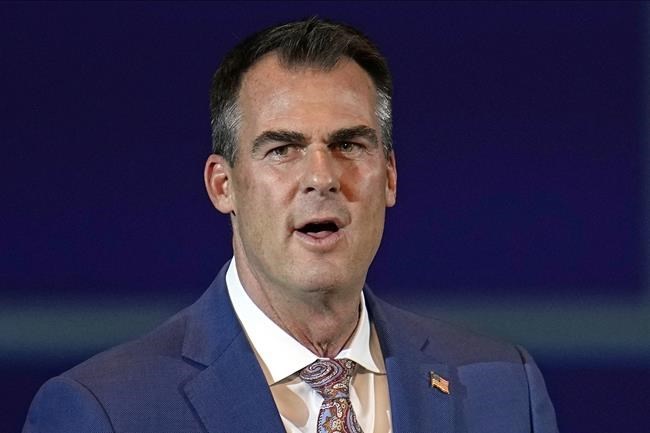
FILE - Oklahoma Gov. Kevin Stitt speaks during a campaign rally on Nov. 1, 2022, in Oklahoma City. Stitt said Tuesday, Jan. 30, 2024, that he is confident in the state’s current lethal injection protocols and has no plans to endorse a switch to nitrogen gas, even as several states are mulling following Alabama’s lead in using nitrogen gas to execute death row inmates. (AP Photo/Sue Ogrocki, File)
January 30, 2024 - 3:15 PM
OKLAHOMA CITY (AP) — Oklahoma Gov. Kevin Stitt said Tuesday he is confident in the state’s current lethal injection protocols and has no plans to endorse a switch to nitrogen gas, even as several states are mulling following Alabama’s lead in using nitrogen gas to execute death row inmates.
Stitt said he visited the Oklahoma State Penitentiary in McAlester in 2020 after the state revamped its lethal injection protocols following a series of problematic executions and he is confident in the way lethal injections are being carried out.
“I know exactly how it works. I know exactly what they’re doing,” Stitt told The Associated Press in an interview. “I don’t want to change a process that’s working.”
The head of Oklahoma's prison system, Steven Harpe, and his chief of staff, Justin Farris, had previously visited Alabama to study its nitrogen gas protocols and said last week they were exploring that method as an option.
Alabama last week became the first state to use nitrogen gas to put a person to death, and Ohio's attorney general on Tuesday endorsed a legislative effort to use nitrogen gas in that state. Alabama, Mississippi and Oklahoma all have authorized nitrogen hypoxia as an execution method, although Oklahoma's law allows it only if lethal injection is no longer available.
Also on Tuesday, Harpe and Oklahoma Attorney General Gentner Drummond filed a joint motion asking the Court of Criminal Appeals to schedule six upcoming executions three months apart, instead of the current 60 days.
In the motion, Harpe notes that the current pace of an execution every two months “is too onerous and not sustainable.”
“The day of an execution affects not only those directly involved in the execution, but the entirety of Oklahoma State Penitentiary, which goes into a near complete lockdown until the execution is completed,” Harpe wrote in an affidavit filed with the motion.
Harpe said the additional time between executions “protects our team's mental health and allows time for them to process and recover between the scheduled executions.”
Oklahoma has executed 11 inmates since resuming lethal injections in October 2021 and has two more currently scheduled for later this year. After that, another six inmates have exhausted all of their appeals and are ready to have execution dates scheduled. The motion filed on Tuesday requests those six inmates — Richard Norman Rojem, Emmanuel Littlejohn, Kevin Ray Underwood, Wendell Arden Grissom, Tremane Wood and Kendrick Antonio Simpson — be scheduled for execution 90 days apart beginning in September.
News from © The Associated Press, 2024